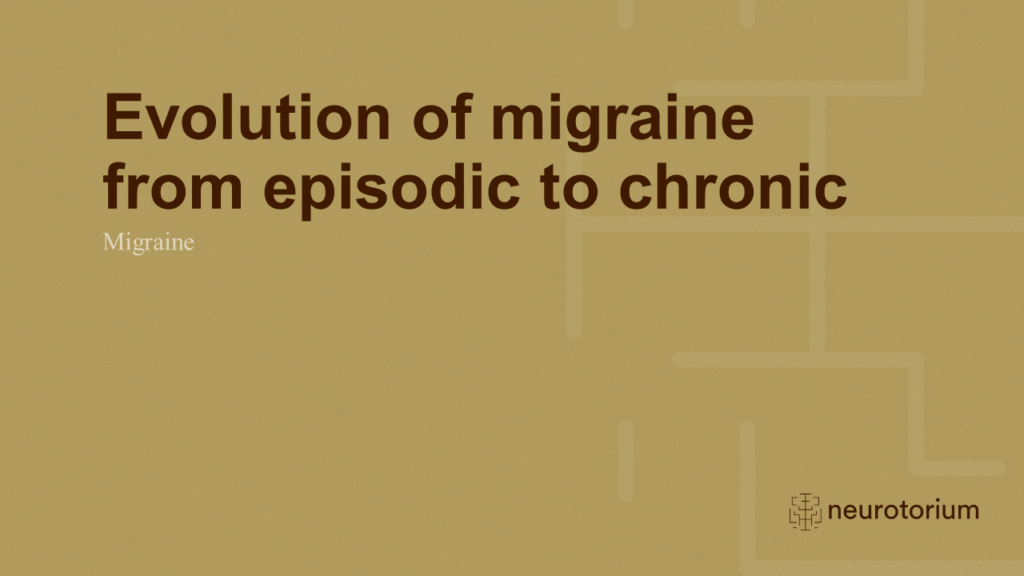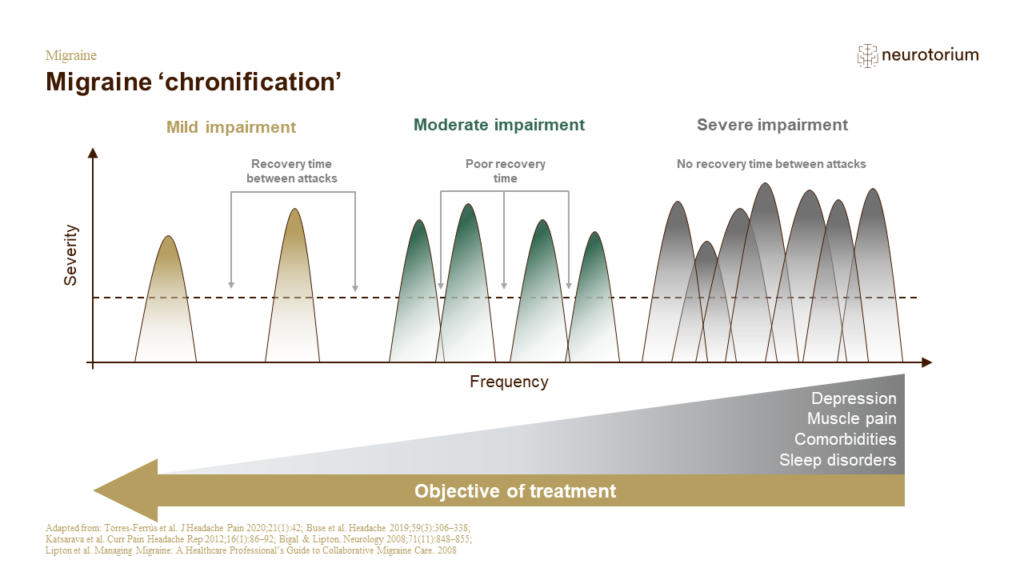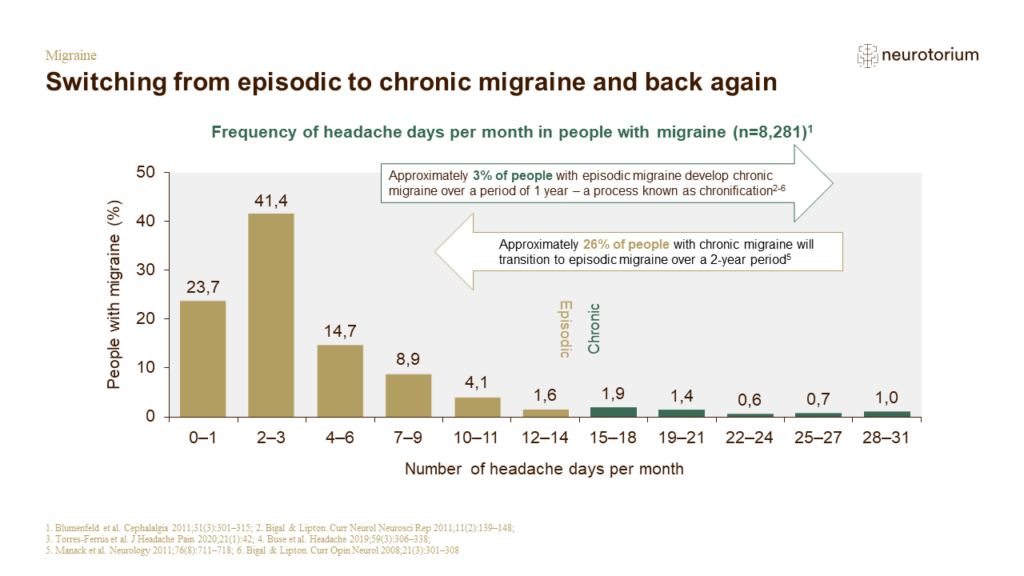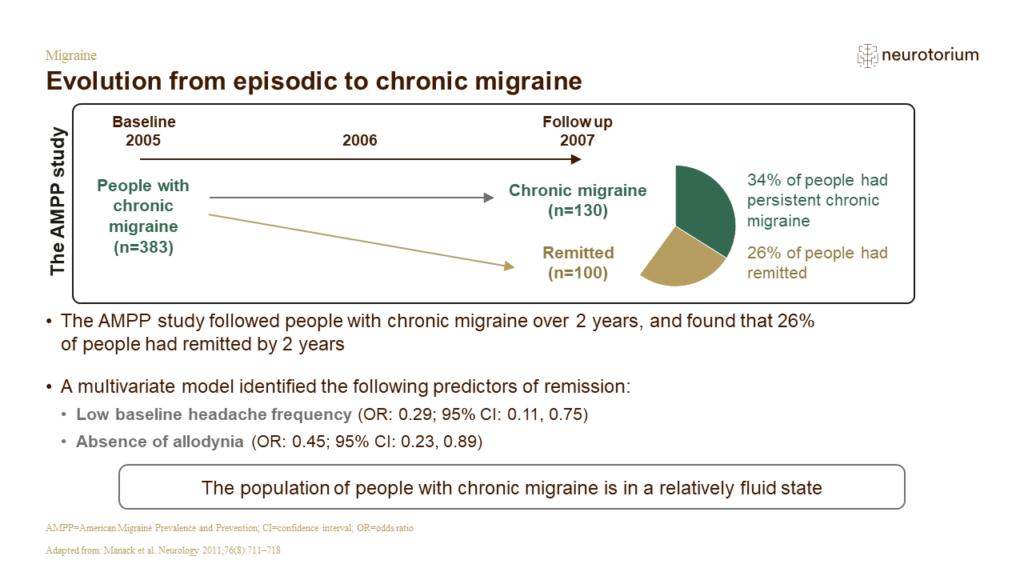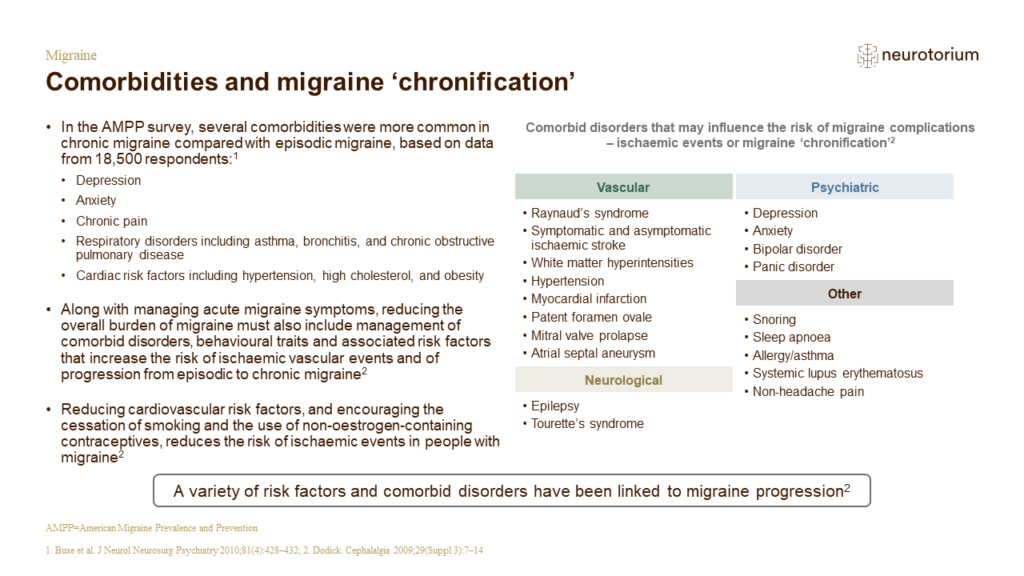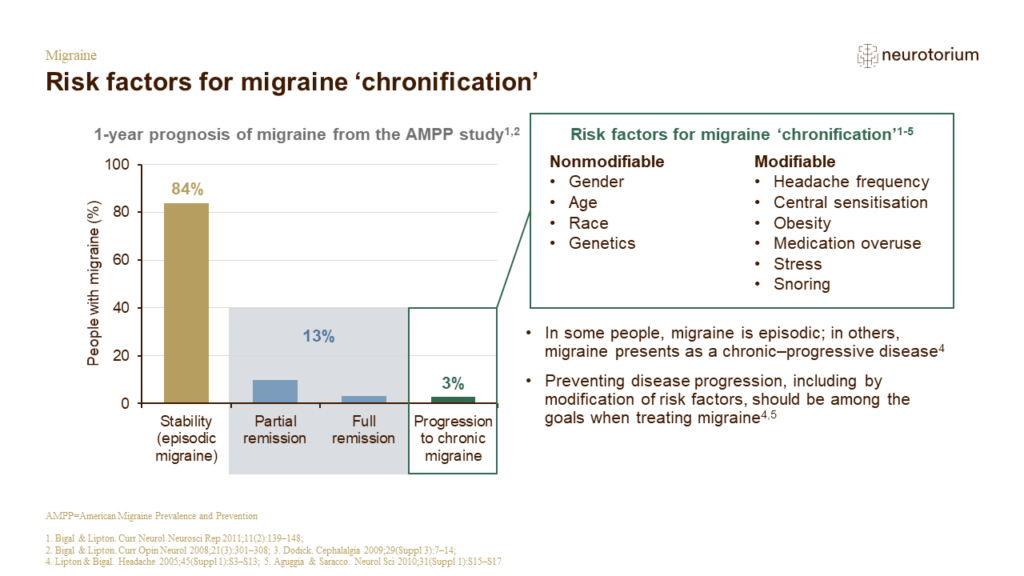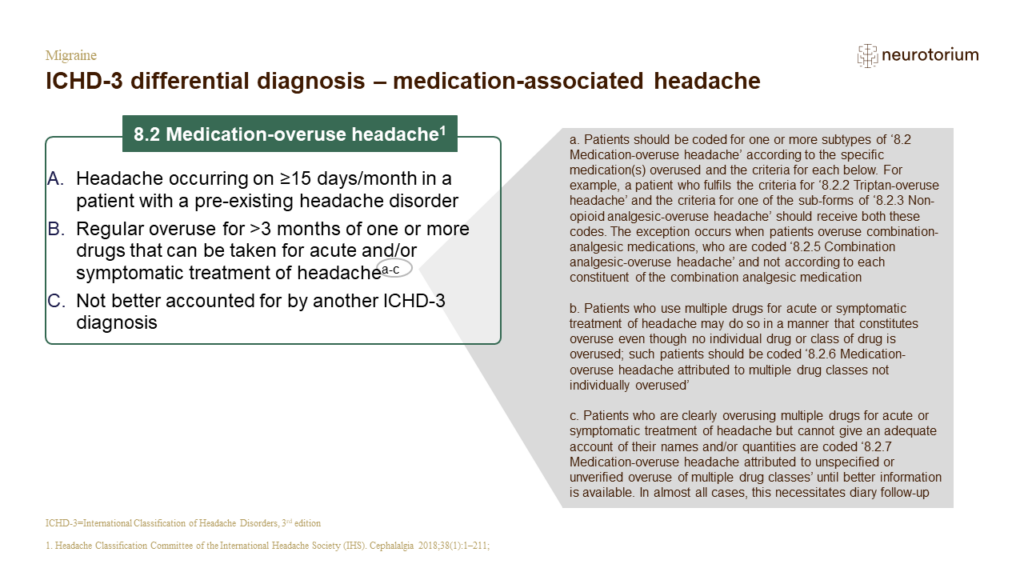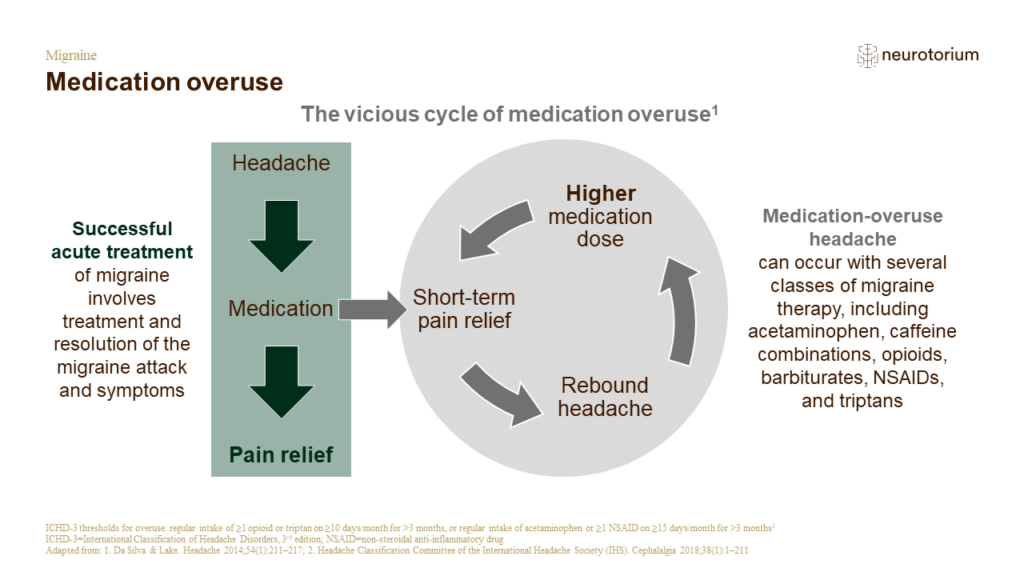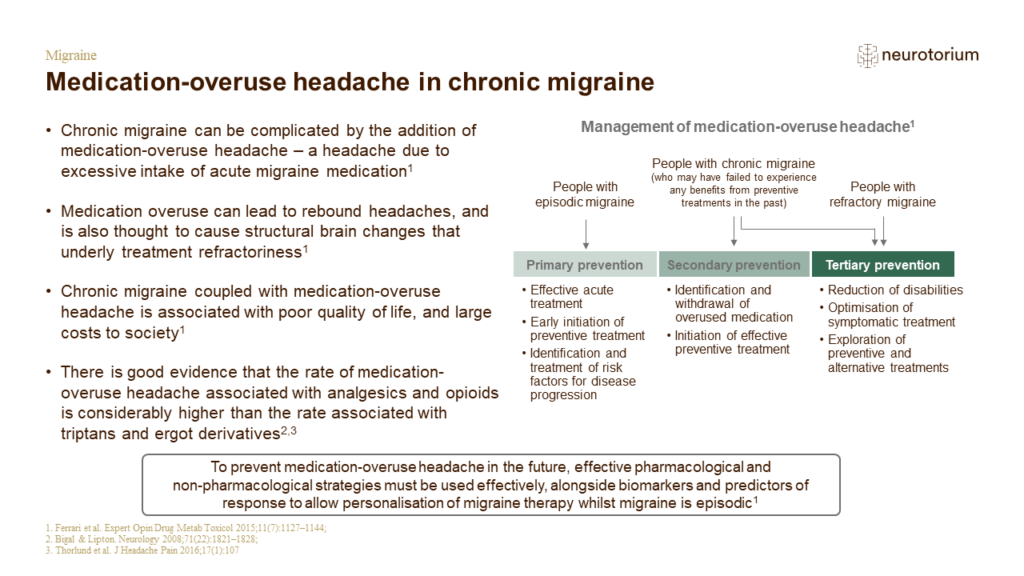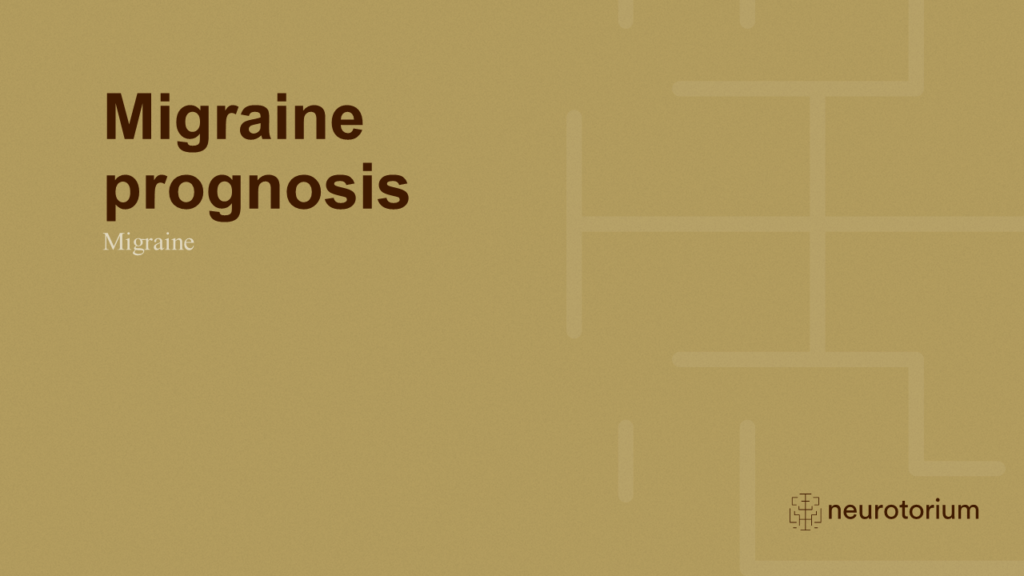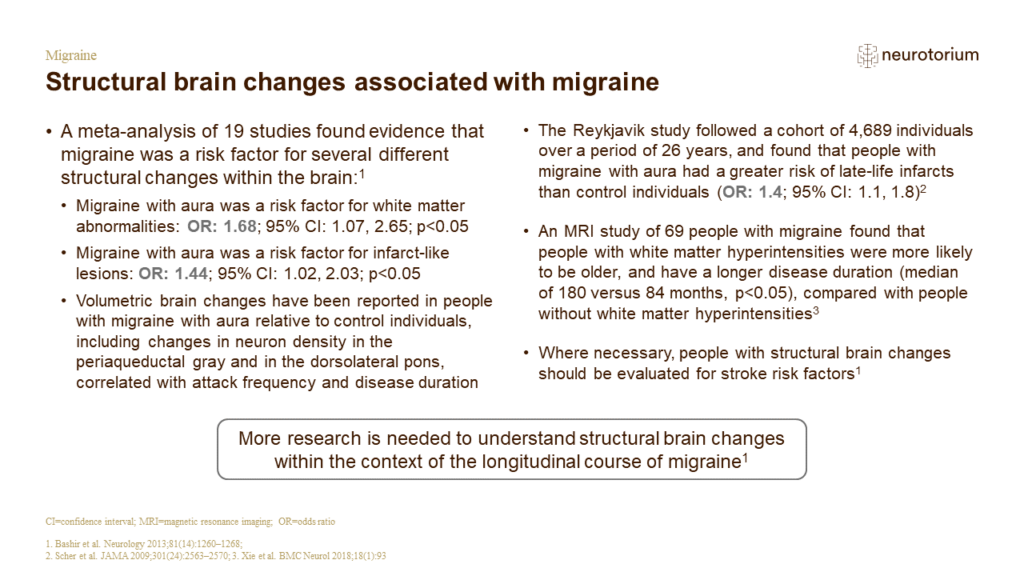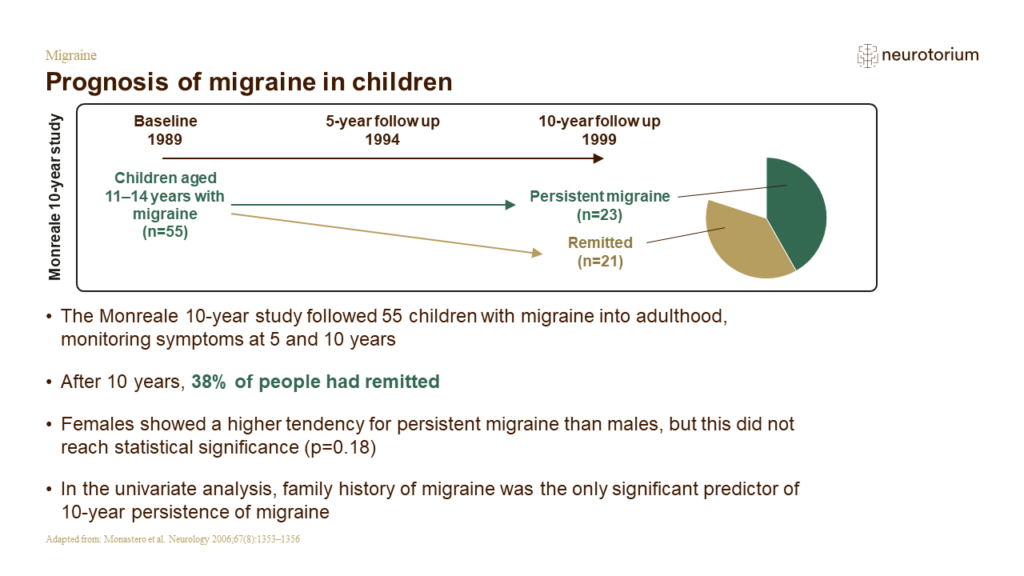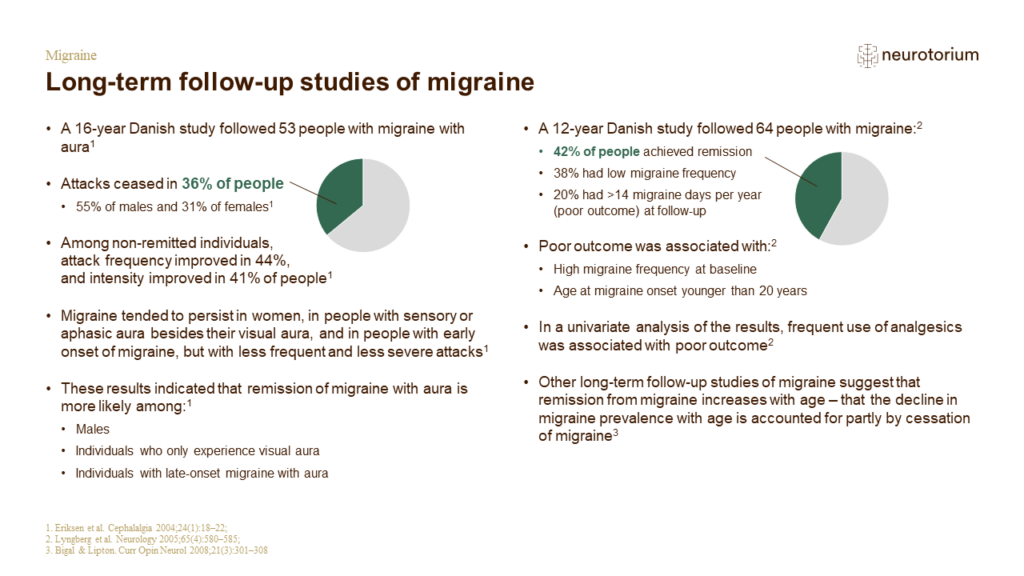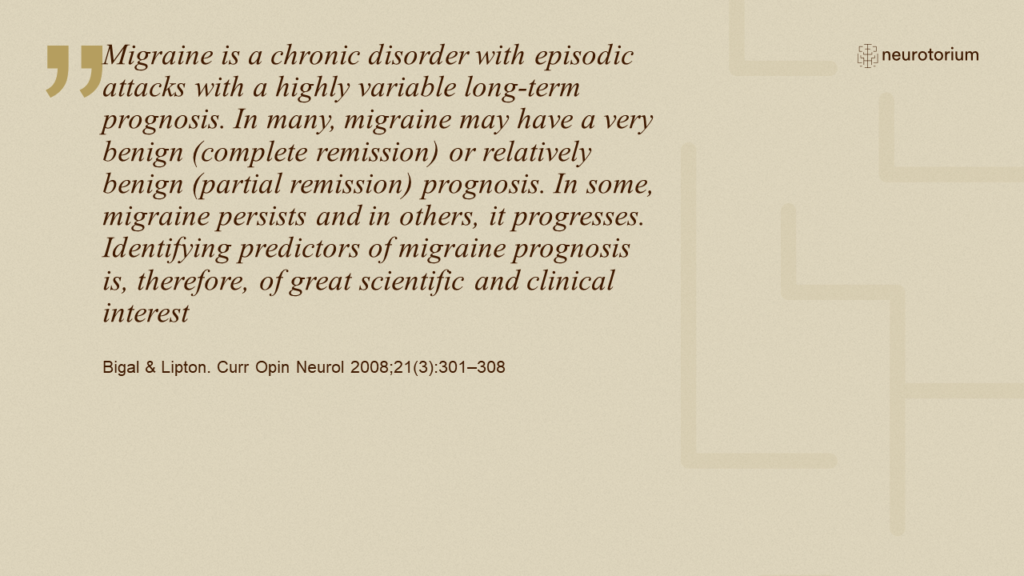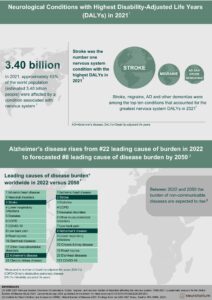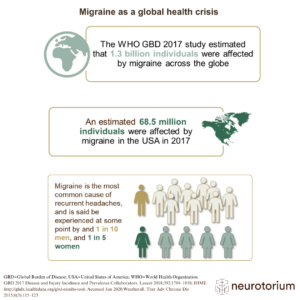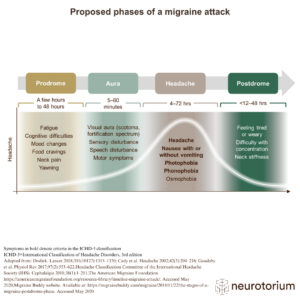Index for
slide deck
Introduction
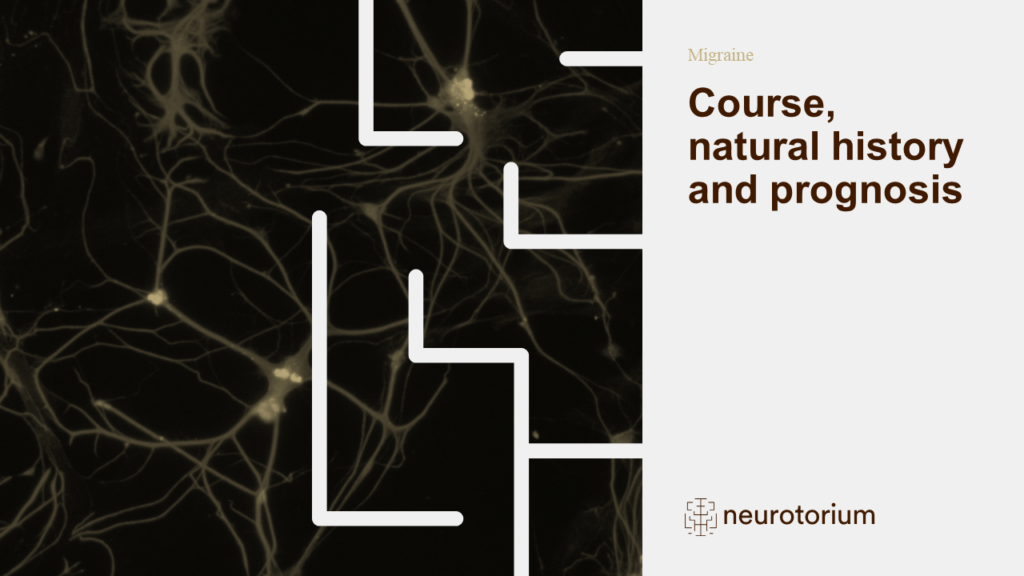
Migraine - Course, natural history and prognosis
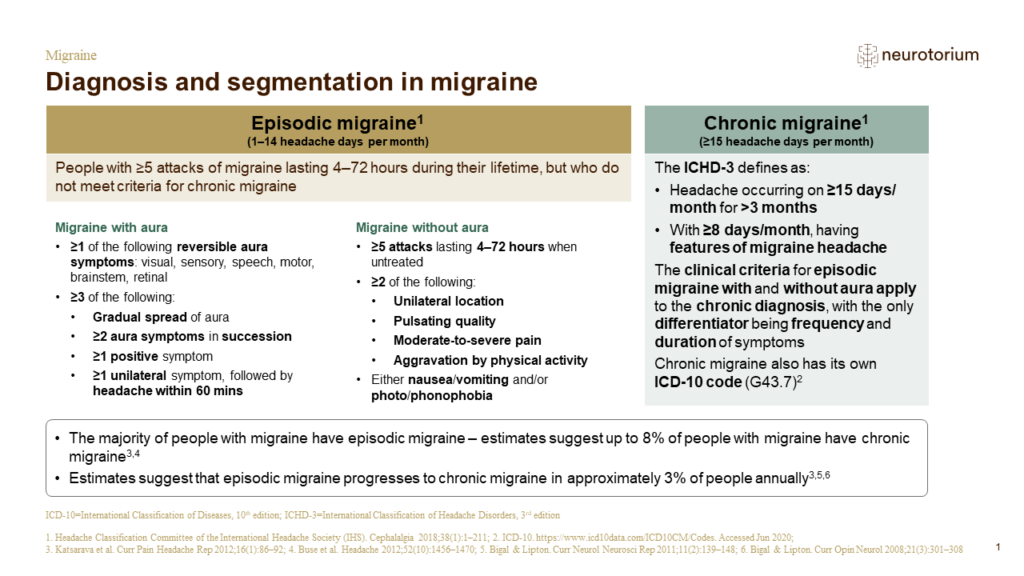
Diagnosis and segmentation in migraine
The American Migraine Prevalence and Prevention (AMPP) study was started in 2004, and involved posting questionnaires to 120,000 households in the US.[Silberstein et al., 2007; AMF website] The questionnaire included questions about headache frequency, severity, medicatio…
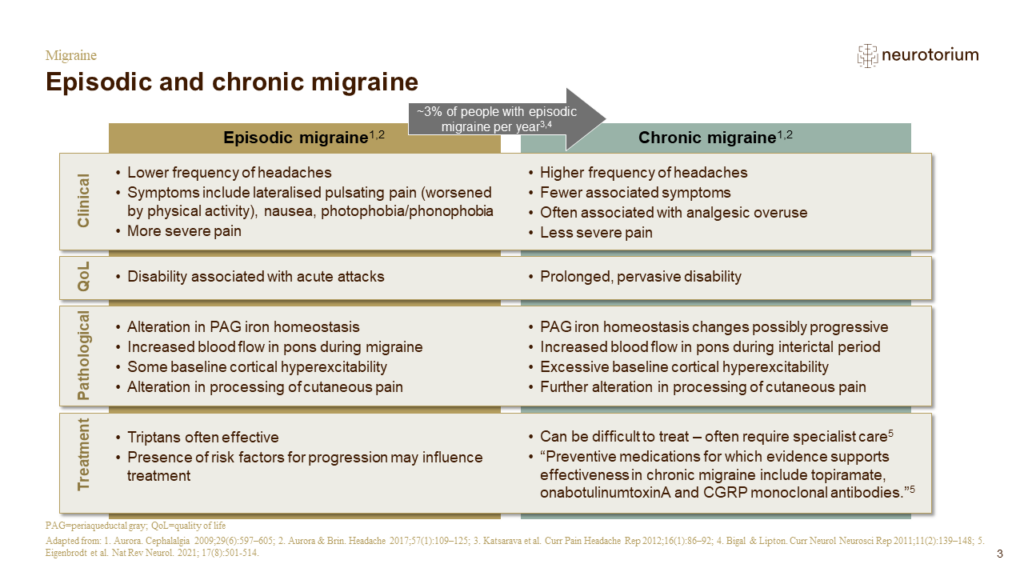
Episodic and chronic migraine
Migraine is a complex spectrum disorder, the clinical and pathological features of which may evolve over time – neuroimaging studies of people with migraine suggest that chronic migraine is associated with progressive brain dysfunction.[Aurora & Brin, 2017] The difference…
A migraine attack
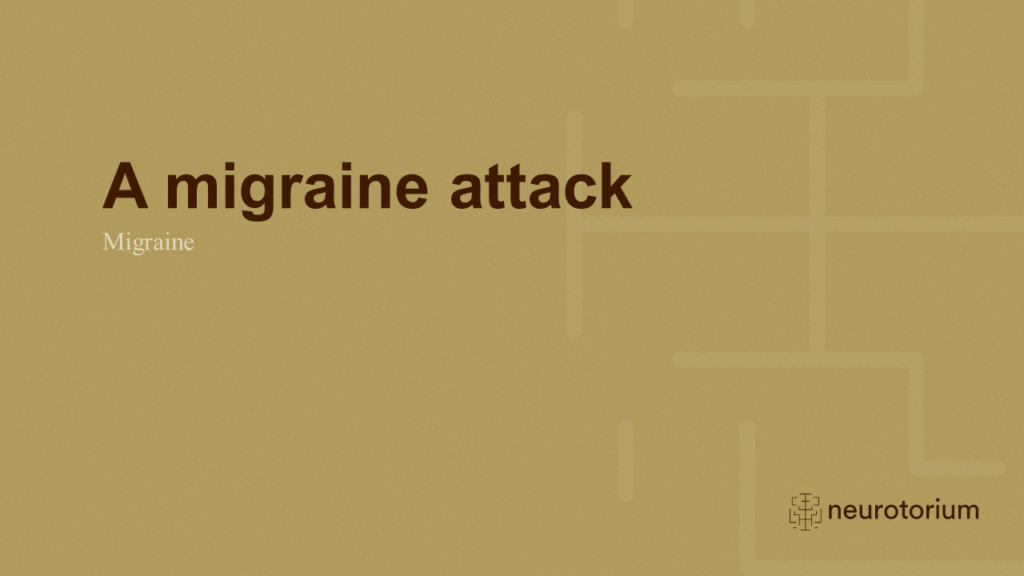
A migraine attack
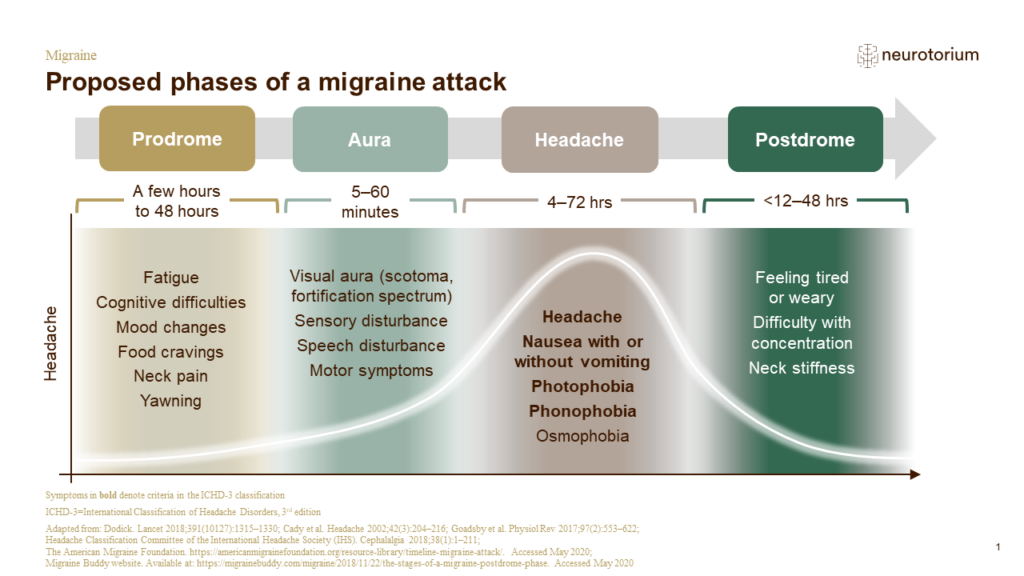
Proposed phases of a migraine attack
Migraine attacks can be broken down into four phases: prodrome, aura, headache, and postdrome, as shown on the slide.[Dodick, 2018; IHS, 2018] The exact timing of each phase is highly variable; the headache phase of a migraine can range from 4–72 hours in adults, and 2–48…
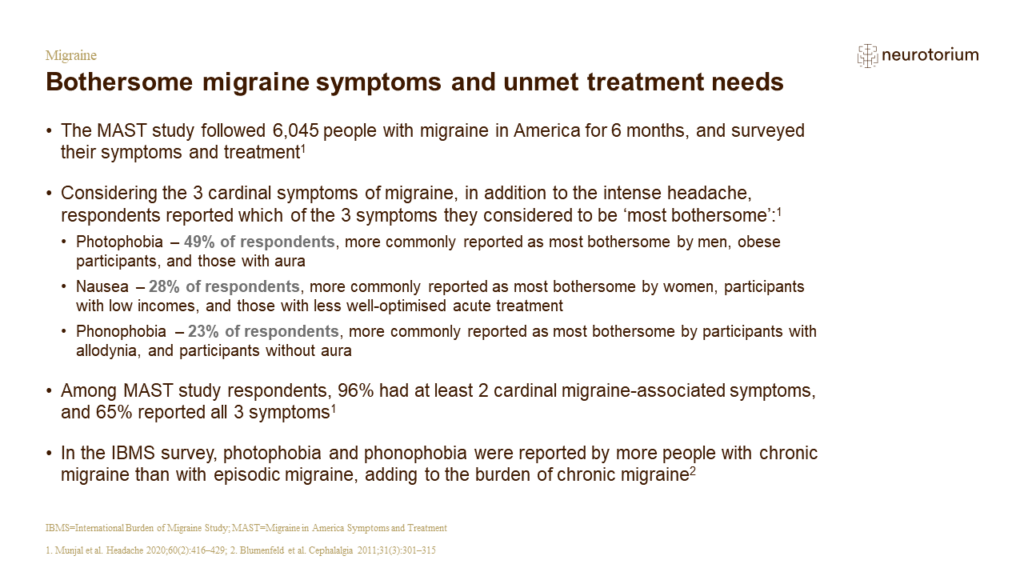
Bothersome migraine symptoms and unmet treatment needs
In the Migraine in America Symptoms and Treatment (MAST) study, all 15,133 participants were invited to participate in a 6-month follow-up study.[Munjal et al., 2020] In total, 50% (7,518/15,133) completed the 6-month follow-up study, of whom 80.4% (6,045/7518) continued …
Migraine triggers
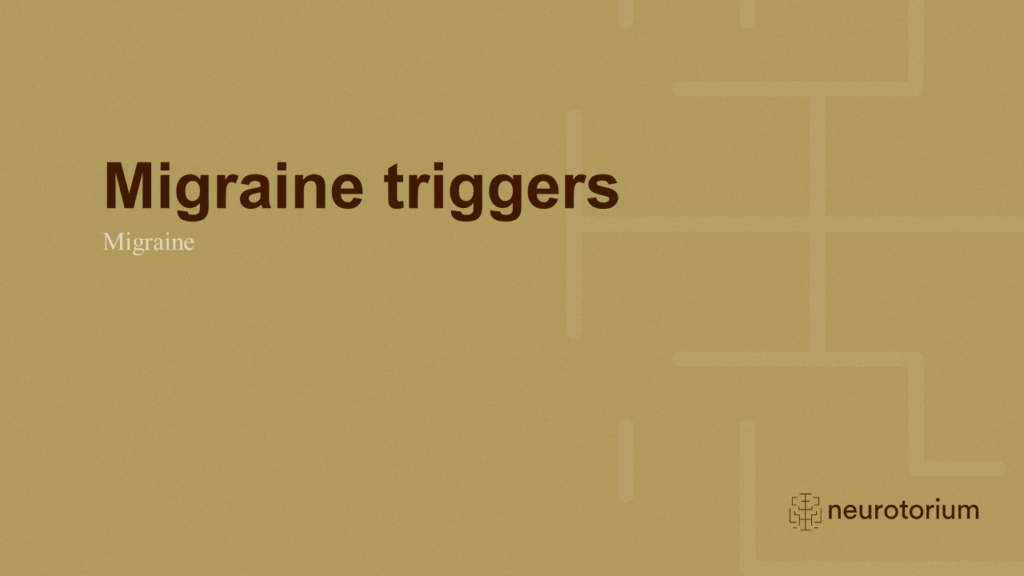
Migraine triggers
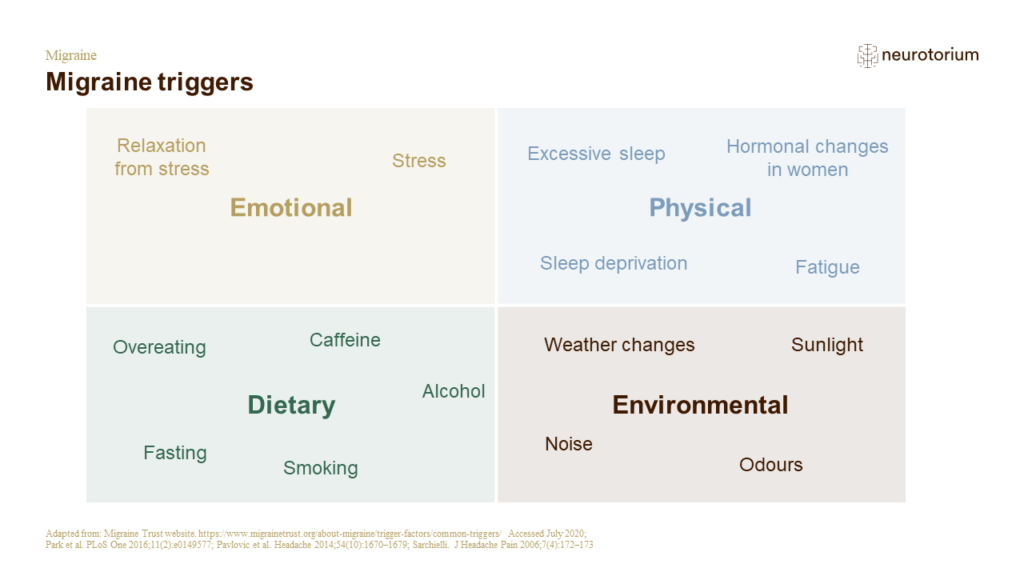
Migraine triggers
Various migraine triggers have been identified, including emotional, physical, dietary, and environmental factors.[Migraine Trust; Park et al., 2016; Pavlovic et al., 2014; Sarchielli, 2006]
Whilst many potential trigger factors for migraine attacks have been identified, …
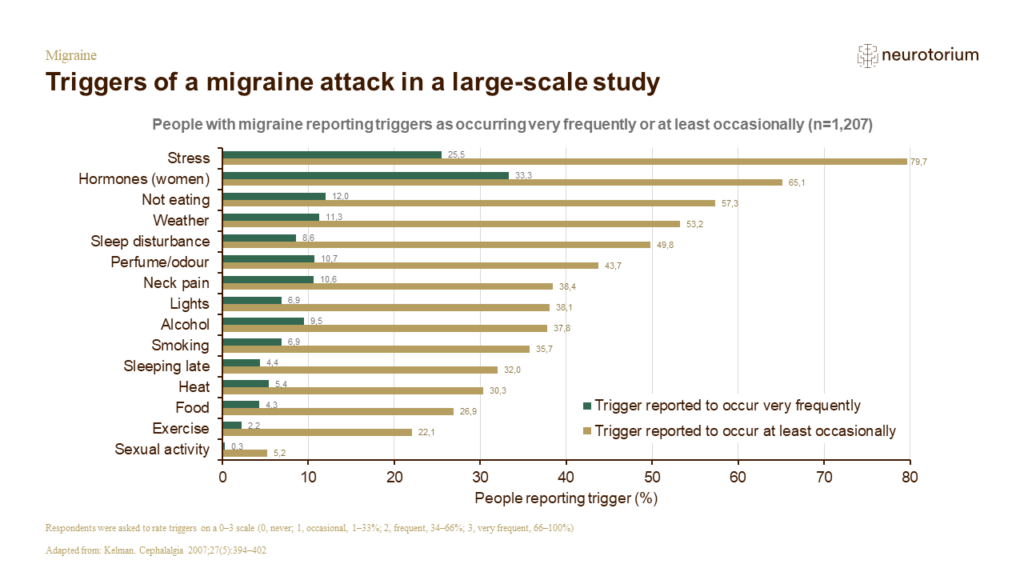
Triggers of a migraine attack in a large-scale study
In this survey, 1,207 people with migraine were asked to rate triggers on a 0–3 scale (0, never; 1, occasional, 1–33%; 2, frequent, 34–66%; 3, very frequent, 66–100%).[Kelman, 2007] As shown on the slide, stress and hormones (women) were the most common triggers reported …
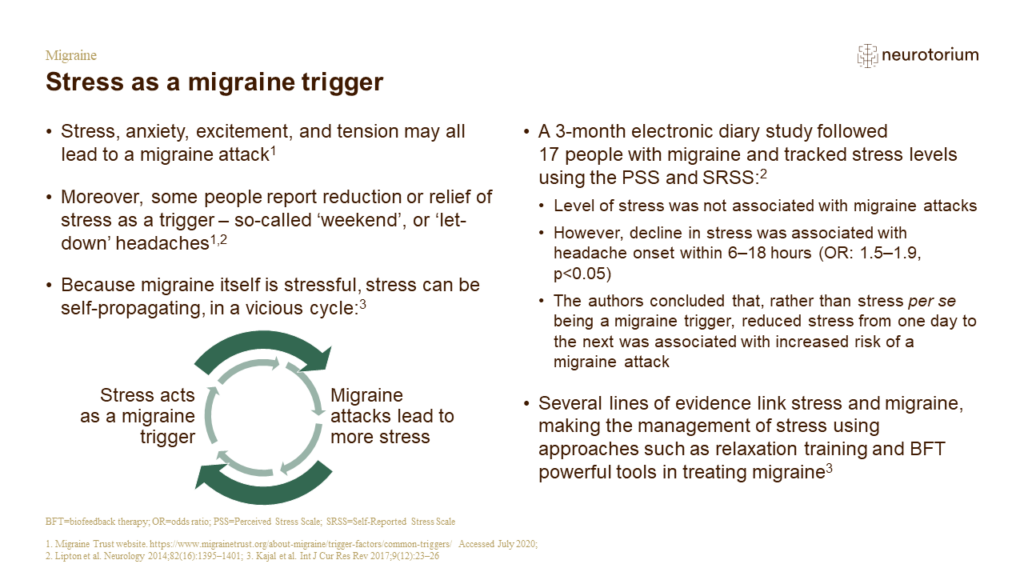
Stress as a migraine trigger
Stress is an important migraine trigger.[Kajal et al., 2017] Several different patterns of stress leading to a migraine attack have been described in the literature:[Spierings et al., 2014; Spierings et al., 1997]
- stress in the afternoon, leading to a headache in the eve…
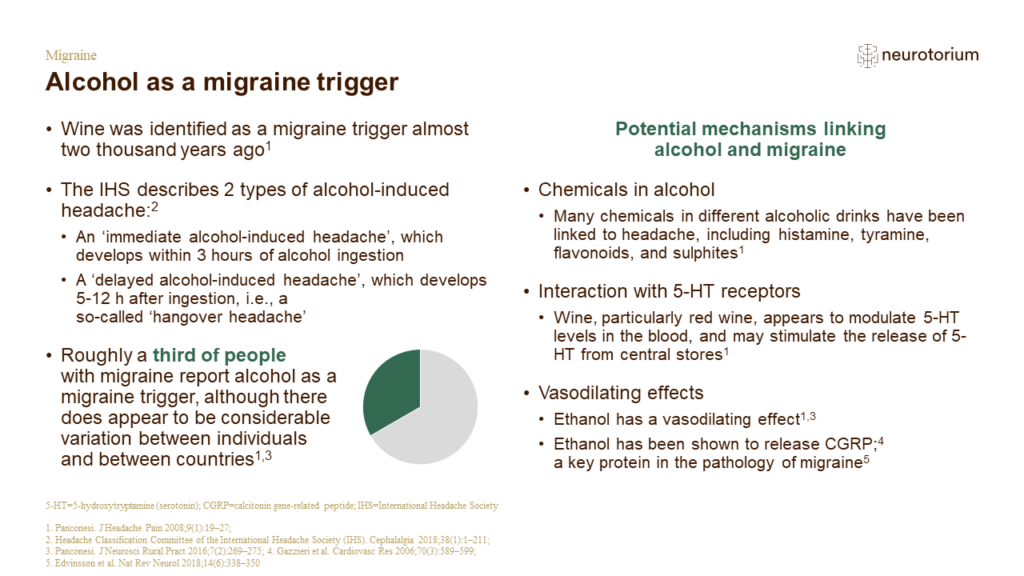
Alcohol as a migraine trigger
Alcohol is identified as a headache trigger in roughly a third of people with migraine, and many mechanisms have been hypothesised to underly this connection.[Panconesi, 2008; Panconesi, 2016; Onderwater et al., 2019] Why some people with migraine do not experience alcoho…
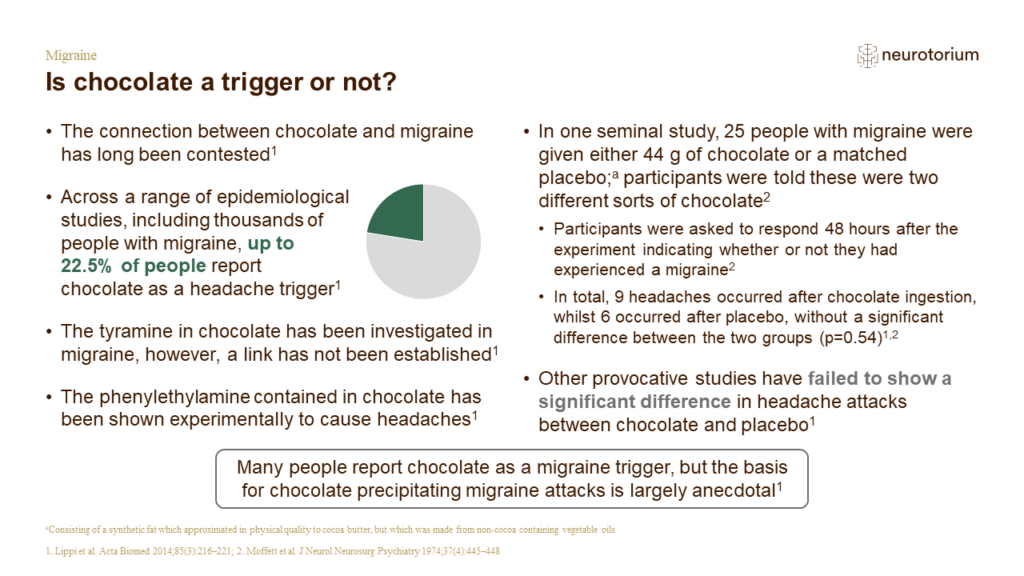
Is chocolate a trigger or not?
Among the difficulties of studying the link between chocolate and migraine is the variation in chocolate that is sold to consumers; the fat content of marketed chocolate can vary between 33–37 grams per 100, and the carbohydrate content can vary between 52–60 grams per 10…
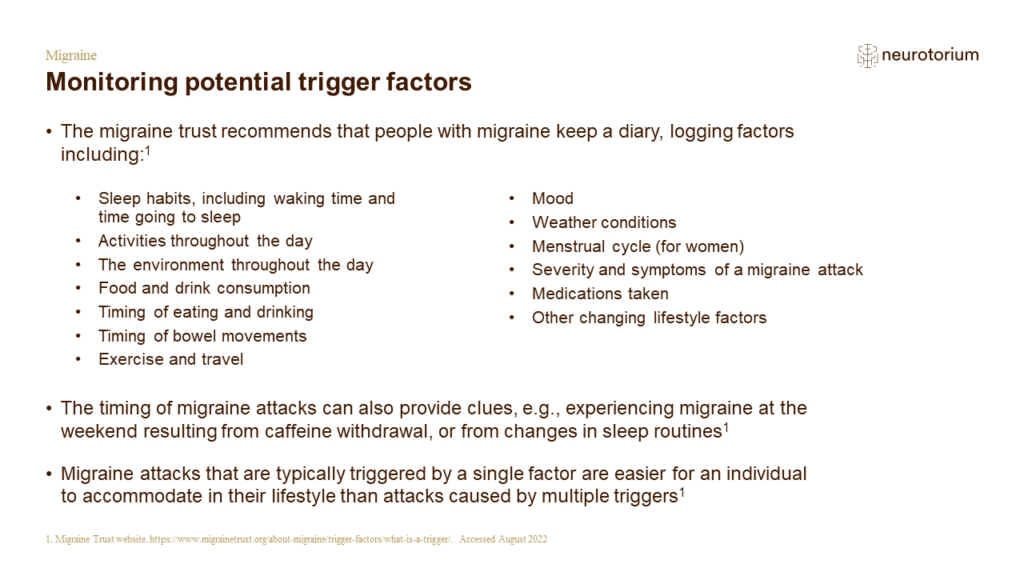
Monitoring potential trigger factors
As outlined on the slide, diaries are a powerful tool for identifying potential trigger factors.[Migraine Trust] Once triggers are identified, it is possible to consider changes to avoid those triggers.[Migraine Trust; Kelman, 2007] However, depending on the nature of the…
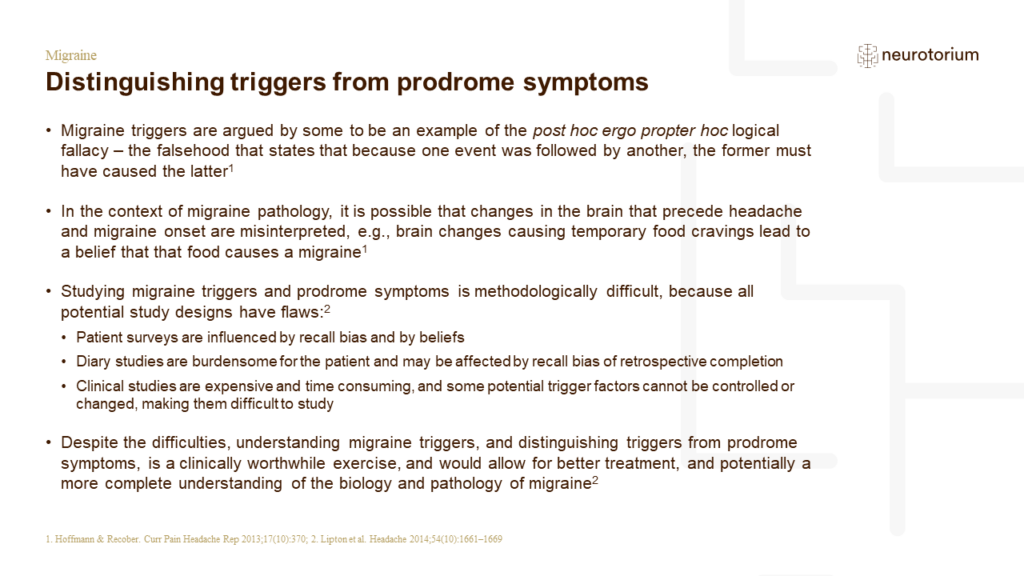
Distinguishing triggers from premonitory symptoms
Consider a person who regularly eats chocolate during the period between migraine attacks.[Lipton et al., 2014] Following this chocolate consumption, the individual experiences a migraine attack.[Lipton et al., 2014] Chocolate might be a triggering factor for the migraine…
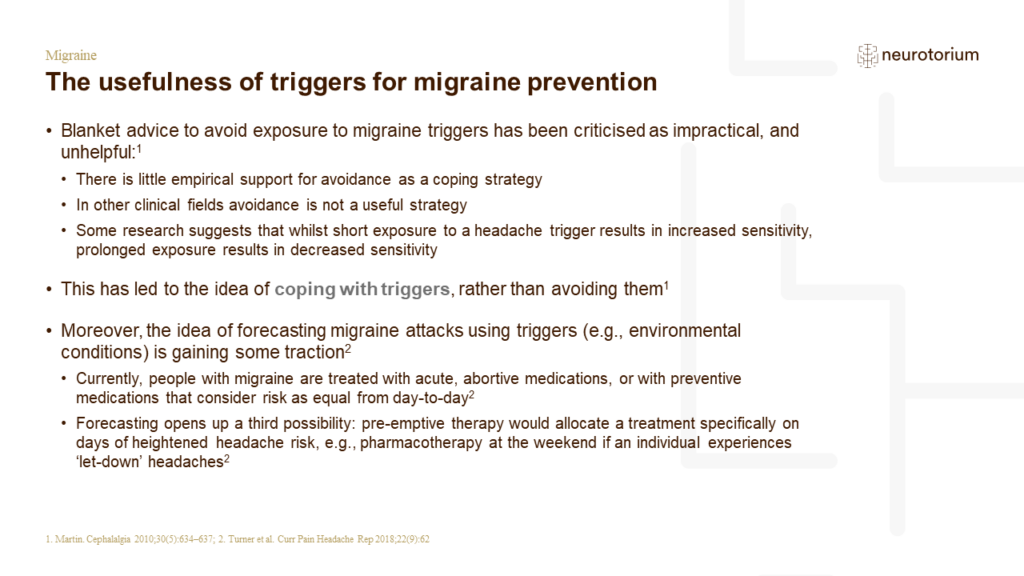
The usefulness of triggers for migraine prevention
Dealing with trigger factors for migraine requires an element of common sense.[Hoffmann & Recober, 2013] Avoidance of specific avoidable trigger factors may make sense for an individual – e.g., if red wine has been identified by that person as a reliable trigger.[Hoffmann…
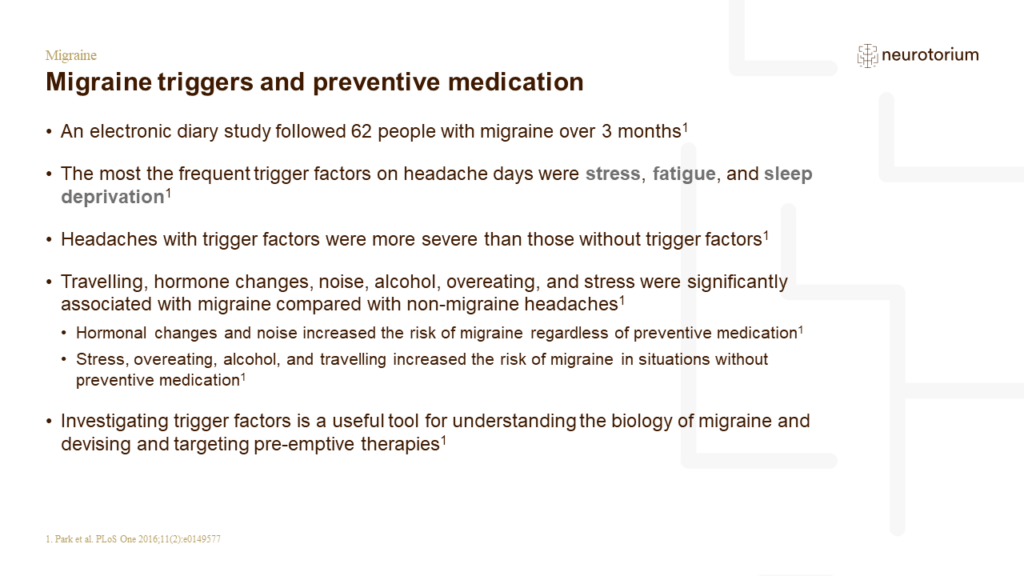
Migraine triggers and preventive medication
This study asked people with migraine to use a smartphone diary program to log details of trigger factors and headache characteristics over a three-month period.[Park et al., 2016] Of the 113 people recruited into the study, 62 (55%) kept the smartphone diary for at least…


